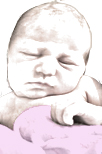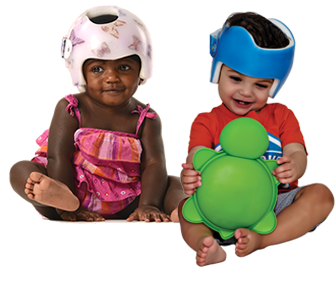Torticollis is a condition where an infant has an imbalance with their cervical muscles which leads to a head tilt to one side, referred to as wry neck. Torticollis literally means “twisted neck” in Latin. It is a shortening of the sternocleidomastoid muscle which runs up the back of the neck. In newborns, torticollis occurs due to positioning in the womb or as a result of a difficult childbirth. This is commonly referred to as congenital muscular torticollis (CMT).
Congenital Muscular Torticollis is associated with deformational plagiocephaly, brachycephaly and scaphocephaly. It is prevalent in 70-95% of cases of deformational plagiocephaly and is still considered to be underreported.



